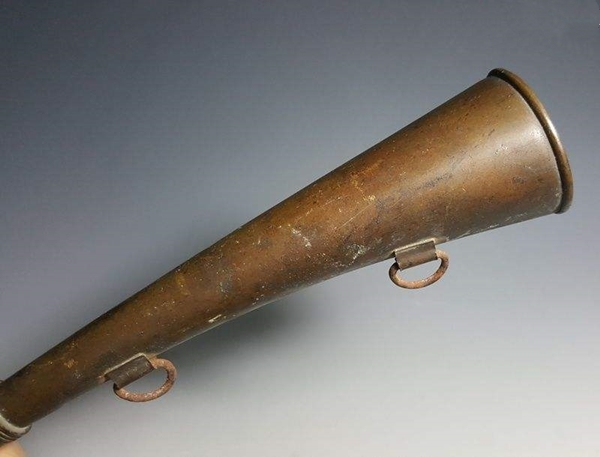The origin and origin of copper horns
Bronze horns, also known as blowing gold, are ancient ethnic and Han lip-vibrating musical instruments. Bronze horns are one of the "horns" of musical instruments, and there are other musical instruments such as ox horns and bamboo horns. Originally a musical instrument of ethnic minorities in northwest China, it was widely popular in ancient times and was a folk musical instrument commonly used by people of all ethnic groups in northern and northwestern China.

As early as the Han Dynasty, horns were popular among nomadic peoples in northern my country. At that time, they were played with natural animal horns, and later they were gradually made of bamboo, wood, leather or copper and other materials. In the Han Dynasty, it was used for advocating music, and later generations were used for the music in the military and Lubo (ceremony). Its shape, in the Han and Wei Dynasties, was a curved angle, and its images were found on the brick tomb of Deng County in the Southern and Northern Dynasties and the murals of the Goguryeo tomb in Ji'an, Liaoning. It was used in the Gaochang music of the ten pieces of music in the Tang Dynasty, as stated in Chen Yang's "Book of Music" in the Song Dynasty: "Bronze horns, Gaochang's musical instruments are also shaped like horns." It was popular in ancient times and was widely used in northern and northwestern my country. Folk musical instruments commonly used by people of all ethnic groups.
The copper horn has a long history, and its origin is closely related to the primitive hunting activities such as witchcraft. In prehistory and the Xia and Shang dynasties, both ox horns and pottery horns were used as signal devices. It was originally made of cattle and sheep horns, and pottery horns appeared in the Neolithic Age. Later, they were further changed to bamboo, wood, leather, copper, etc. to make curved horns. The horns flowed into the Central Plains around the Han Dynasty, and were widely used in advocacy music. Later generations were used in military and lubo (ceremony) music. Its shape was a curved angle in the Han and Wei Dynasties. The horns played in the pictures of the existing Han drum music are very large and are already artificial horns. Two bricks were unearthed from the Southern Dynasties Tomb in Deng County, Henan Province. One of them is a picture of four people playing music.
 渝公网安备 50010702504639号
渝公网安备 50010702504639号